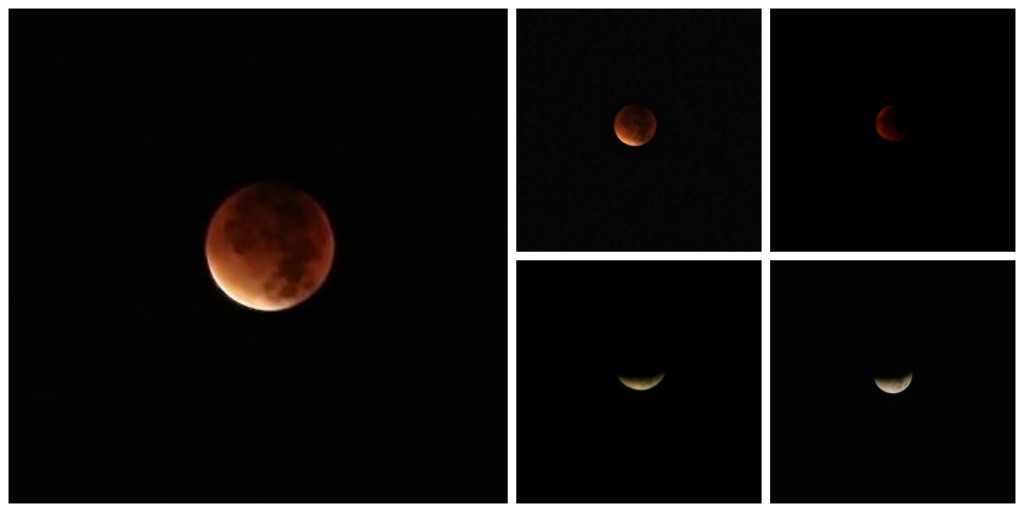Blood Moon eclipse in perigee
September 28th, 2015: Blood Moon eclipse in perigee
On the 28th September 2015 we had the chance to admire one of the most rare and wonderful shows that the nature can offer: a supermoon eclipse.
It was a special total eclipse, since at the end of the month of September our satellite was near to the perigee, the closer point of its orbit by our planet. The perigee isn’t always at the same distance from Earth: the one at the end of September was the closest ever in 2015 (the Moon was distant from the Earth about 357,000 km, whereas the average is 384 thousand km). So the moon appeared bigger than usual (about 14%) and red (Blood Moon) because a part of the sunlight has touched the Earth’s surface and, through the atmosphere, was diverted until it touched the moon, giving it a reddish reflection. The colour is in fact due to the atmosphere “filtering”: because of a phenomenon linked to the refraction, the sunlight gives some azure air components (that’s why the sky is blue), and so it remains richer of red.
NASA insists on saying that the red supermoon of 28th September 2015 has been a very special event, because it doesn’t happen very often. In fact, since the beginning of the last century, supermoon eclipses have occurred only six times: in 1910, 1928, 1946,1964,1982 and in the last September.
The next supermoon eclipse will take place in 2033. This requires the alignment of 3 cycles:
– the SYNODIC MONTH (of the moon phases)
– the ANOMALISTIC ONE (the time that passes between two perigees)
– the DRACONIC ONE (the time the moon takes to pass by the same nodes, the points where lunar orbit intersects with the plane of Earth orbit)
and this happens about once every 18 years.
Federica Moraglia e Maira Toscano, Italy


